
views
Adjusting Your Hamster’s Sleep Patterns

Understand that hamsters are crepuscular. This means that, while hamsters are not technically nocturnal (awake only at night), they are most active during dawn and dusk periods, and will be more active at night than during the day. If you have a hamster in your room, they will naturally want to play at night.

Play with your hamster during the early evening. If your hamster wants to sleep, let it, but as soon as it’s awake again, continue playing with it. This may incline your hamster to stay up more during the day, since it will enjoy the play and attention, and the hamster may then be tired out and sleep better at night. Do this for several days or even weeks until your hamster starts to wake up earlier in the evenings to play. Your hamster will still be active at night, but you can teach it to expect some activity during the day, too.

Feed your hamster in the early evening. Even if your hamster isn’t inclined to wake up until later in the evening, you can try feeding them slightly earlier. Chances are, your hamster won’t be able to resist the smell and will get up to eat, they may stay awake to play. If you do this routinely, your hamster will associate getting up earlier with getting fed, and it will begin to get up earlier naturally.

Take out all the toys at night and replace them in the day. This way, your hamster will not have anything to play with during the day, which may make them more inclined to sleep and rest. Give your hamster a new toy or a treat every day to keep him up and active.

Be sensitive to your breed of a hamster. You should be able to find out what breed of hamster you own, either by checking with the pet-store clerk (before or after you buy the pet) or by looking up your hamster’s physical description online. The three most common types of hamster are Dwarf, Syrian, and Chinese. Syrian hamsters have relatively inflexible sleep schedules. They need to sleep during the day and have their activity times during evening and night. Dwarf and Chinese hamsters, on the other hand, have more flexible sleep schedules. They may get used to activities during the day, and begin to wake up naturally for play.
Adjusting to Your Hamster’s Sleep Patterns
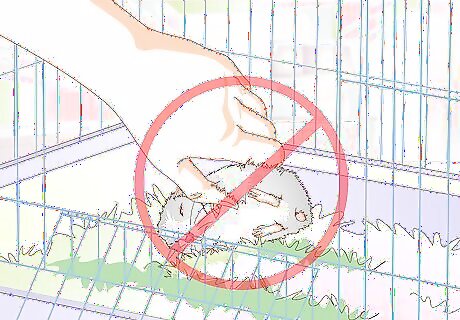
Let the hamster sleep. It can be harmful to your hamster to disrupt their sleep schedule. Sleep-deprived hamsters may become irritable and even bite their owners, or they may develop stress-induced illnesses. Do not force your hamster to be awake at a time when it normally wouldn’t be. Since hamsters are not strictly nocturnal, they will naturally have periods of activity during the day. Don’t expect a healthy hamster to sleep through the whole day without stirring.

Play with your hamster in the mornings and evenings. Since these are the times that your hamster will naturally be most awake and hence most playful, plan on daily playtimes with your hamster, especially in the evening. Regular play with your hamster will also help tire it out, so it will sleep more soundly during the day. If you can encourage your hamster to run on its wheel before you’re in bed and asleep, it may result in your hamster being more relaxed and quiet while you’re asleep.
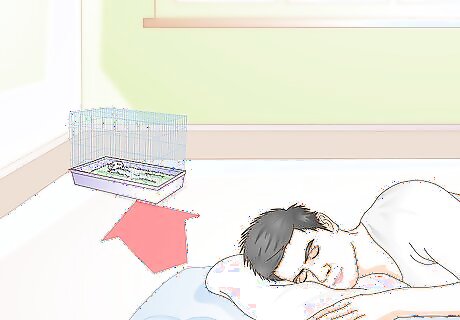
Locate your hamster’s cage away from your bed. This issue is important for both you and your hamster. If you don’t want to be kept awake at night by your hamster as it eats, runs about its cage, and is generally active, put its cage somewhere out of earshot. For example, you could keep your hamster’s cage: On the floor in your bathroom. In a spare room or guest room in your house. In your living room, if it will be quiet and dark at night.
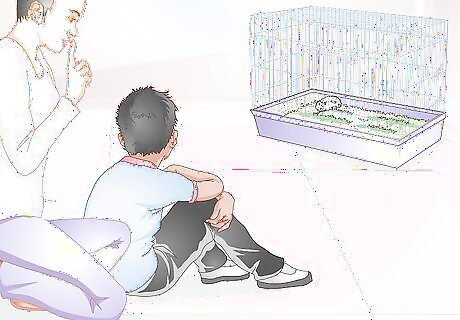
Keep the cage in a room that’s quiet during the day. It’s important to give your hamster a quiet space to sleep in, so it can fully rest during the day and not become sick or stressed. For example, if your living room is often loud and crowded during the day, that would not be a good location to keep your hamster’s cage. If you recently bought your hamster from a bright, crowded pet store, it may take time for them to settle into a regular sleeping routine. To help them along, keep their cage for a quiet room for as much of the day as possible.

Give your hamster total darkness at night. Your hamster’s cage should be located in a room that is not lit at night, either by streetlights or by internal lights in the room. Hamsters need to be in a fully dark setting at night, just like they would be in nature. If you have a night light in your room or keep your hamster in a room that stays bright at night, you’ll need to move the cage location. Darkness at night will make your hamster feel energized and comfortable. If it’s light at night, your hamster may become confused & uncertain how it should behave. Be consistent with the amount of light and darkness your hamster receives every day. In general, hamsters should have 12 hours of light and 12 hours of dark a day.
Getting it to Sleep in Your Hand
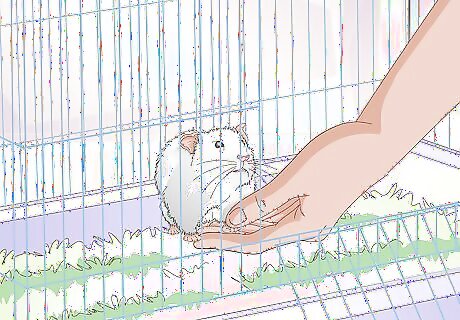
Build up trust with your hamster. Although hamsters love human interaction and thrive on getting gently petted, played with, and picked up, they will need time to learn to trust you. For the first week that you own your hamster, avoid making quick movements around it. Let the hamster sniff you before you touch it or pick it up. After about a week, your hamster will develop trust and you can start to pick it up more regularly.
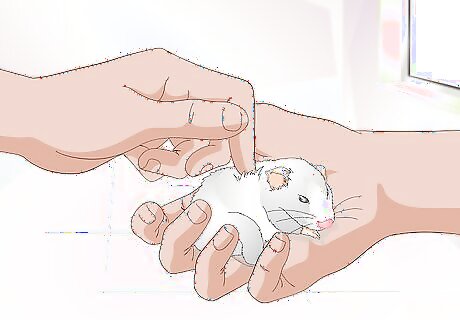
Hold your hamster. The more comfortable your hamster feels being touched and held by you, the sooner it will be willing to sleep in your hand. Once your hamster is comfortable being stroked and picked up, you can begin to carry the hamster for longer periods. Cup the hamster loosely in your hand when you hold it. Never squeeze or trap the hamster with your hands. If it seems agitated or uncomfortable, but the hamster back in its cage. Never wake your hamster up to play. When they’re sleeping during the day, let your hamster rest. If you wake it up and attempt to play, the hamster may bite you.
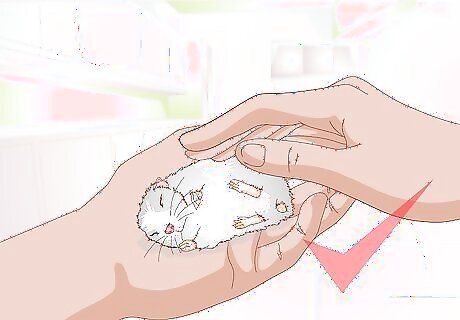
Carry your hamster when it’s tired. To let your hamster sleep in your hand, you’ll have to spend time carrying it when it’s sleepy. This should be in the early evening (when it’s just waking up) or late morning (when it’s going to bed). Try sitting down or remaining still when you’re holding your sleepy hamster, and soon you’ll find it sleeping in your hand. Don’t pick your hamster up once it’s already asleep.
Putting a Sick Hamster to Sleep Permanently
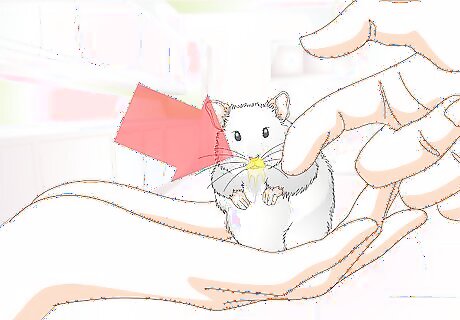
Look for signs of illness. Since hamsters are such small animals, it can be difficult to tell if your hamster is sick. However, hamsters often hide their illness as long as possible, and any illness can quickly become serious. To see if your hamster is sick, look for signals like: Inactivity and loss of appetite. Sneezing or wheezing. Discharge from eyes or nose. Diarrhea or wetness around the tail. Hair loss.

Call your veterinarian. Hamsters are prone to certain illnesses, including respiratory infections and pneumonia. Hamsters can also contract skin diseases, including ringworm and various infections. If you suspect your hamster may have an illness, call your veterinarian and schedule an appointment for your hamster. Many of these diseases are induced by stress and rapid diet changes.

Take your hamster to the vet to be euthanized. If your hamster is seriously ill and cannot be saved by medication or surgery, it may need to be humanely euthanized. This will also be the case for very old hamsters, whose quality of life has begun to decline. Euthanasia is inexpensive, and vets may be willing to perform the procedure for free if your hamster is suffering. DO NOT attempt to put your hamster to sleep at home. Although they are small and delicate animals, hamsters, like any other animal, should only be euthanized by professional veterinarians.




















Comments
0 comment